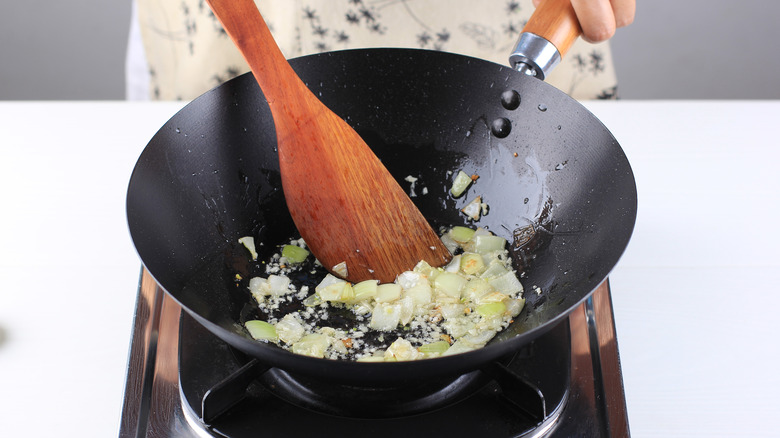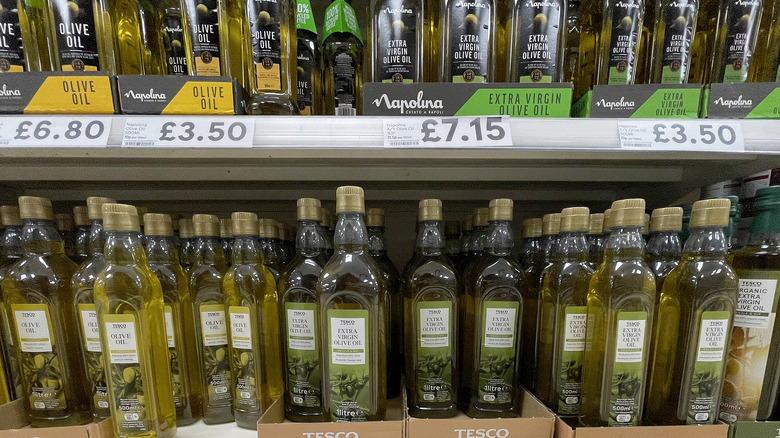The Sautéing Rule You Might Be Overlooking
Whether you're cooking meat or whipping up some veggies for a side dish, one of the most basic techniques at your disposal in the kitchen is sautéing. As Misen explains, this incredibly simple cooking method only requires three things besides your food of choice: a pan, some oil, and a flipping utensil like a spatula or large spoon– unless you want to get fancy and add a little wine to your pan. Despite this simple list, there is one area where people can still get mixed up and that is the cooking oil. While it may not matter what type of oil you use, the amount of oil is very important. Although it can be tempting to go easy on the oil to cut back on calories or prevent food waste, it's better to err on the side of caution in this scenario and give it a little bit extra.
According to Serious Eats an even coating of oil on the bottom of your pan ensures an even cook on your food and prevents sticking, since food that touches the pan directly cooks much faster, and– if the food is partially touching oil– unevenly.
How much oil is enough?
So how much oil should you use the next time you need to sauté something? According to Food Network, you should start by making sure the bottom of your skillet is evenly coated– Misen also notes that a skillet or a wok instead of a sauté pan is actually the best pan to sauté in despite the names because they have curved sides which makes flipping food in the oil easier. Depending on the size of your skillet, Food Network recommends using one or two tablespoons of oil as a starting point to make sure the heat from your pan is properly conducted to your food.
However, Serious Eats advises that once you get cooking, you should pay attention to the bottom of your pan. If the pan starts to look dry in places while you are cooking or between batches of food in the pan, it is perfectly permissible to add a little more oil so your dish doesn't come out dry or unevenly cooked.

